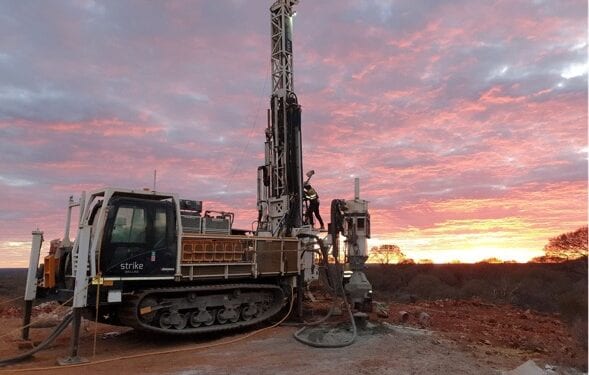Funds To Help Step-Up Exploration At Mt Alexander
St George Mining Limited (ASX: SGQ) has concluded a successful A$7 million capital raising to fund ongoing exploration activities at its flagship high-grade Mt Alexander Project, in the north-eastern Goldfields of Western Australia.
Commitments to raise A$7 million have been received from institutional and sophisticated investors for a placement of new shares at A$0.082 per share
Executive Chairman, John Prineas,said the Placement was heavily oversubscribed, reflecting the strong investor interest created by the company’s ongoing exploration success that continues to expand the nickel-copper sulphide footprint at Mt Alexander.
“With high-grade nickel-copper-cobalt-PGEs starting at just 30m from surface, a large underexplored mineral system and a location in an established mining region of Western Australia, our Mt Alexander Project stands out as investors look for significant new high-grade nickel sulphide discoveries,” Mr Prineassaid.
“Recent results from drilling and geophysical surveys at the West End and Investigators Prospects have confirmed the potential for significant mineralisation at depth, below the shallow high-grade deposits already discovered.
“With this heavily oversubscribed placement, St George can now use its strong balance sheet to scope out the full mineral potential at the Mt Alexander Project.
“We thank existing and new shareholders for recognising the strong upside of Mt Alexander and look forward to delivering more exploration success.”
St George recently drilled the successful hole MAD200 to a downhole depth of 543.1m to test a broad SQUID moving loop (MLEM) anomaly identified at West End. The anomaly was identified in only a single component of the EM data, in the late- time Channel 28 component BZ, and interpreted to potentially represent sulphides at a depth beyond the effective detection limit of the surface MLEM survey.
MAD200 intersected host intrusive rocks from 500.8m to 513.4m downhole. An interval of disseminated and blebby sulphides (<5% sulphides with pentlandite (pn), chalcopyrite (cp) and pyrrhotite (py)) was observed on the basal contact of the intrusive unit – from 512.0m to 513.4m downhole.
The mineralised intrusive is preserved, indicating it has not been structurally modified and suggesting the potential for further nickel-copper sulphides proximal to MAD200.
The intersected intrusive rocks are on the same horizon as the host intrusive unit identified by drilling along a 6.5km strike of the Cathedrals Belt. The intrusive rocks in MAD200 are logged as gabbronorite which is seen across the strike of the Cathedrals Belt and known to host major intrusive-style nickel sulphide deposits in Western Australia including the Nova-Bollinger, Savannah and Nebo-Babel deposits.
A DHEM survey in MAD200 is scheduled for completion this week to search for conductive bodies proximal to the hole. A DHEM survey in MAD196, which tested 50m up-dip from MAD200, has already identified three very strong EM conductors that remain untested by drilling.












